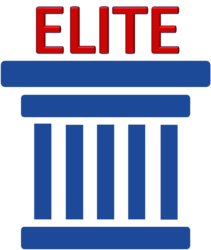Organizations spend billions of dollars each year on leadership development programs, but very little, if anything, on managing the leadership resources they developed. Leadership resources management is a data-driven approach to managing an organization’s leadership resources. It enables more informed decisions in promotions, assignments, retention and hiring by replacing subjective interviews, relationship-based promotions and selections with a quantifiable, repeatable and unbiased leadership management process. It goes beyond leadership development and helps organizations better manage their leadership resources.
Organizations need a data-driven approach to leadership resources management to ensure the right leader is assigned the right assignment/promotion at the right time. In the current disruptive labor market, it is critical for organizations to identify and retain their best leaders, grow the next level of leaders and monitor the next level of leaders. It can be the difference between keeping or losing your best leaders, the difference between identifying or missing high potential hires, the difference between eliminating or maintaining a toxic work environment, and the difference between promoting people based on leadership potential or based on prior functional success. Each of these could have dire consequences for an organization.
The impact of using leadership resources management solution (LRMS) in your organization is extensive, including:
- Quantifiably identifying an organization’s best leaders with accompanying strategies for better retention;
- Removing or minimizing bias in your leadership selection, promotion and hiring processes;
- Better management of the human resources pipeline of prospective leaders;
- Identifying toxic or dysfunctional team environments
- Improving diversity, equity and inclusion initiatives by providing a quantifiable means to providing equal access
Of the several reasons an organization should implement an LRMS, there are 3 that standout.
- Mitigating the impact of the ‘Great Resignation.’ Most organizations will probably lose some people during these challenging times, but the impact of losing your best leaders could be devastating. An LRMS helps an organization identify their best leaders as well as assess the strength of talent on the leadership bench. Armed with this knowledge, an organization can implement strategies to improve the retention of their most valuable leaders.
- Supporting diversity, equity and inclusion initiatives. In the last few years, many organizations have implemented DEI initiatives. The challenge is that most are still relying on subjective interviews, observation and/or relationships to make it work. Using a data-driven approach would have far greater impact and provide more justifiable support for promotions, assignments and hiring choices.
- Weeding out toxic leaders. Working for a toxic or bad leader not only takes a toll on their direct reports, but their toxic attitude can infect the attitudes of others in the organization. Too many times, these non-leaders are purposely left to their own devices or go undetected. An LRMS quickly and anonymously identifies gaps in the perception the ‘leader’ has in their abilities and the perception of their direct reports and peers. Once identified the organization can try to reform them through coaching or suggest they find another position.
Step up to leadership resources management in 2023. The solution is very cost effective as the turnover costs from losing just one valuable leader can easily outweigh the cost of implementation.
How does your organization manage its leadership resources? Please leave your thoughts and comments below. Learn more about our approach to managing leadership resources and our solution, LeadershipRMS™ at LeadershipRMS.com.



